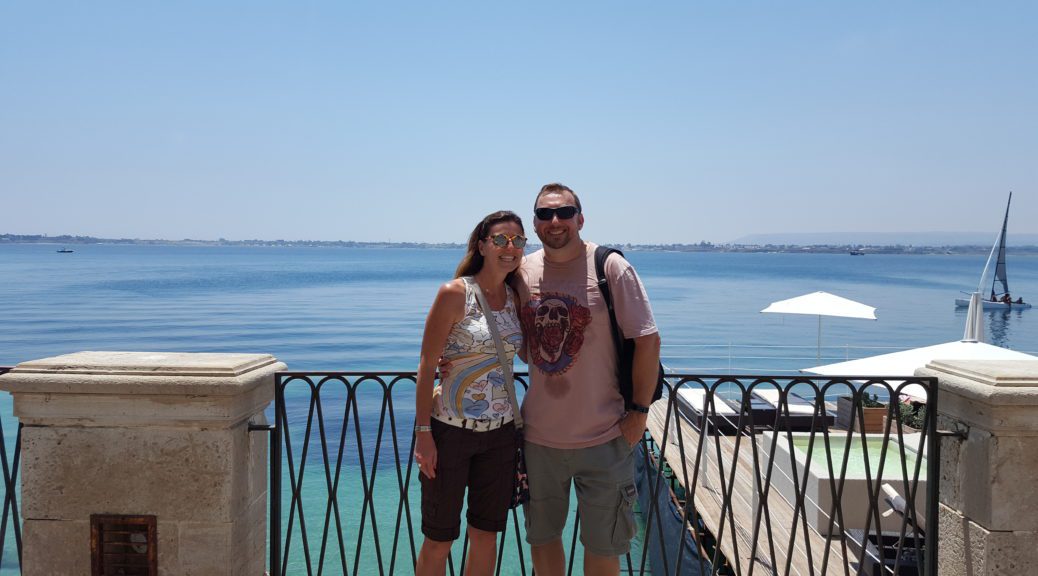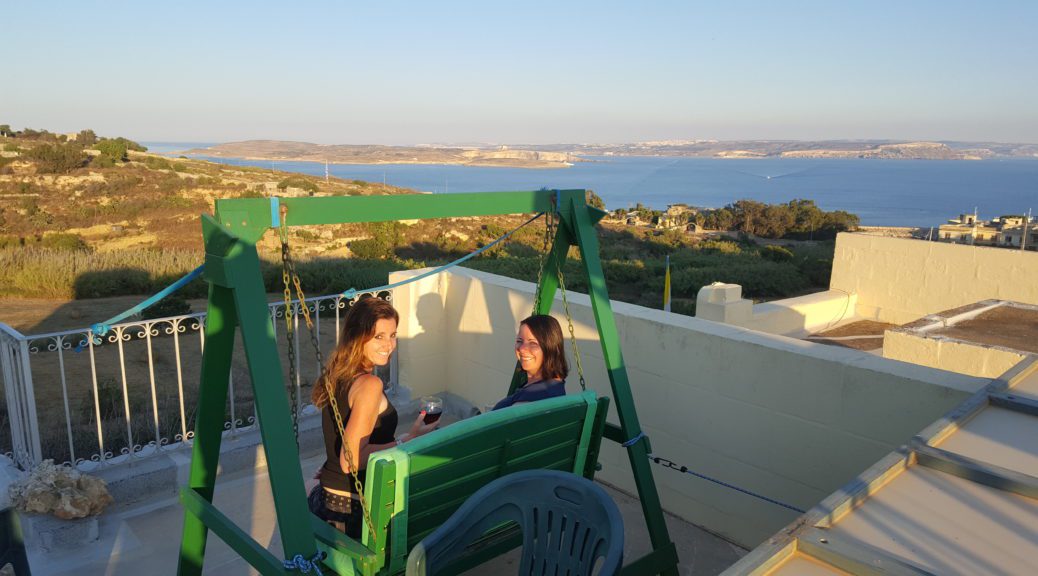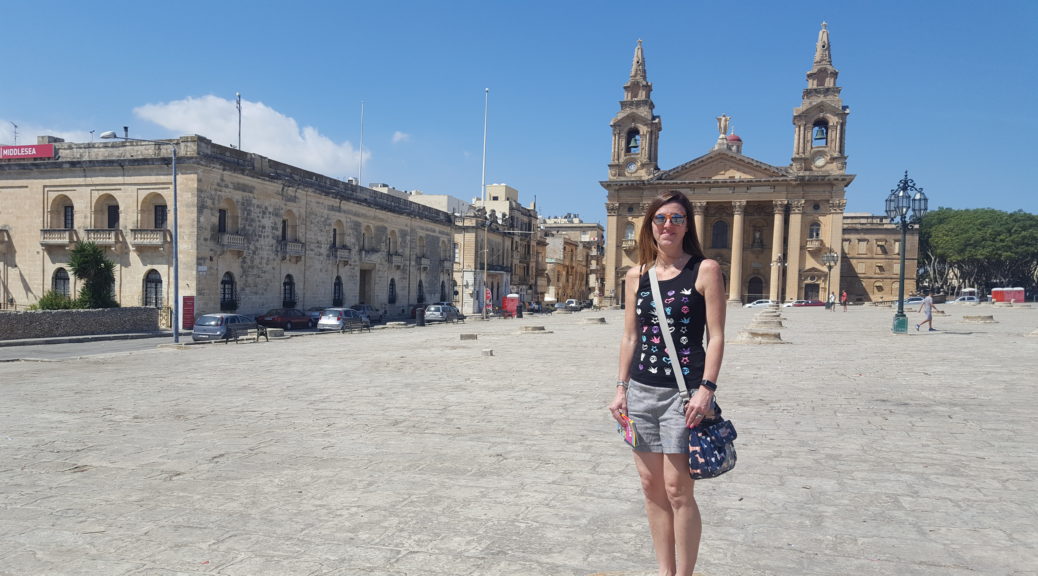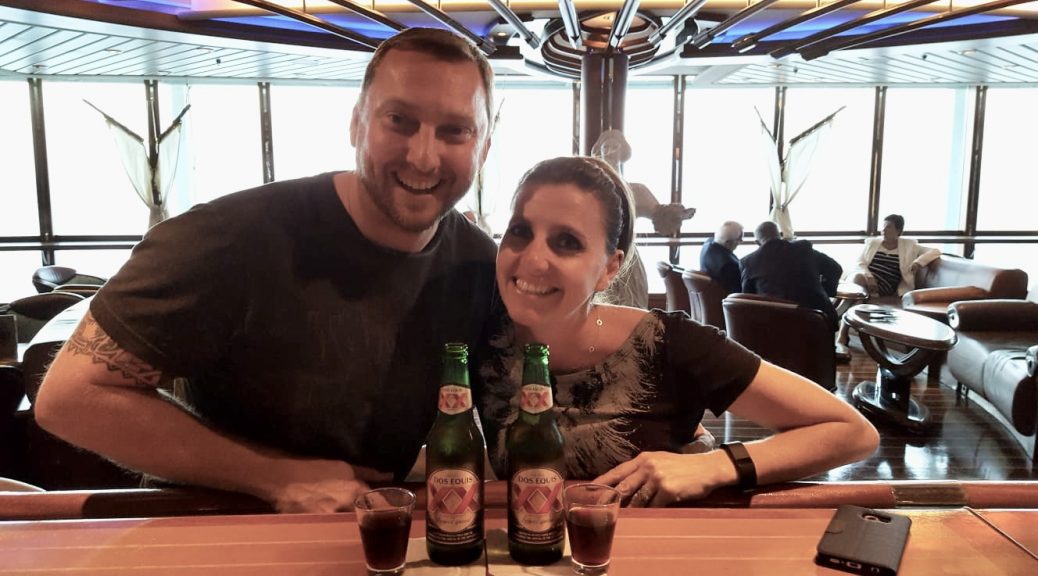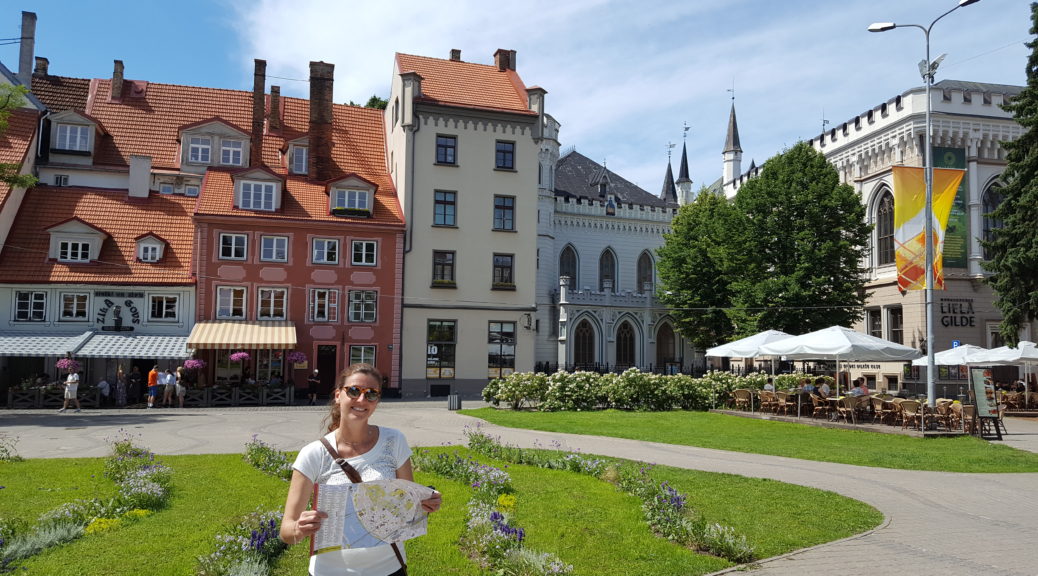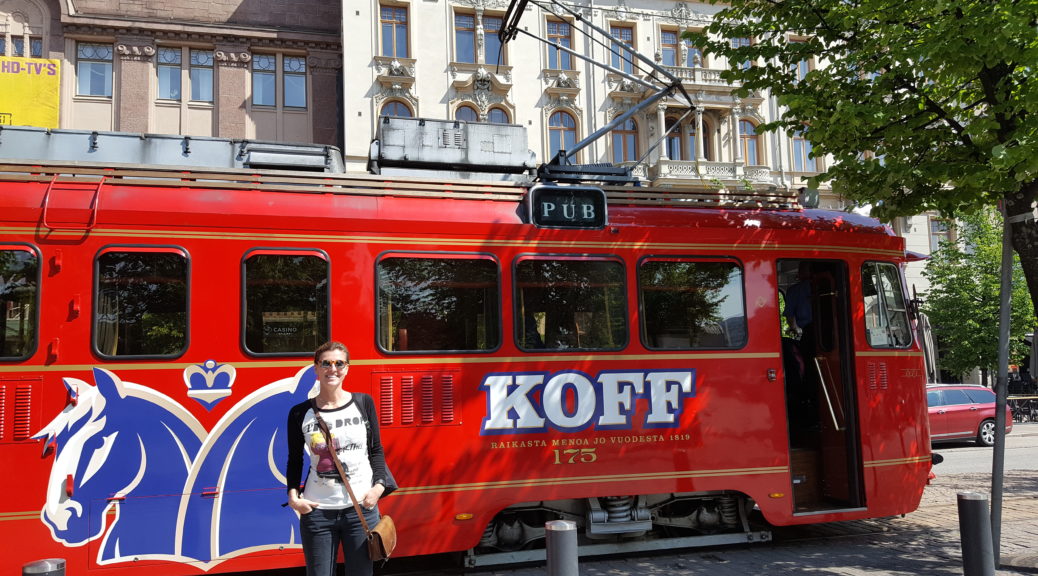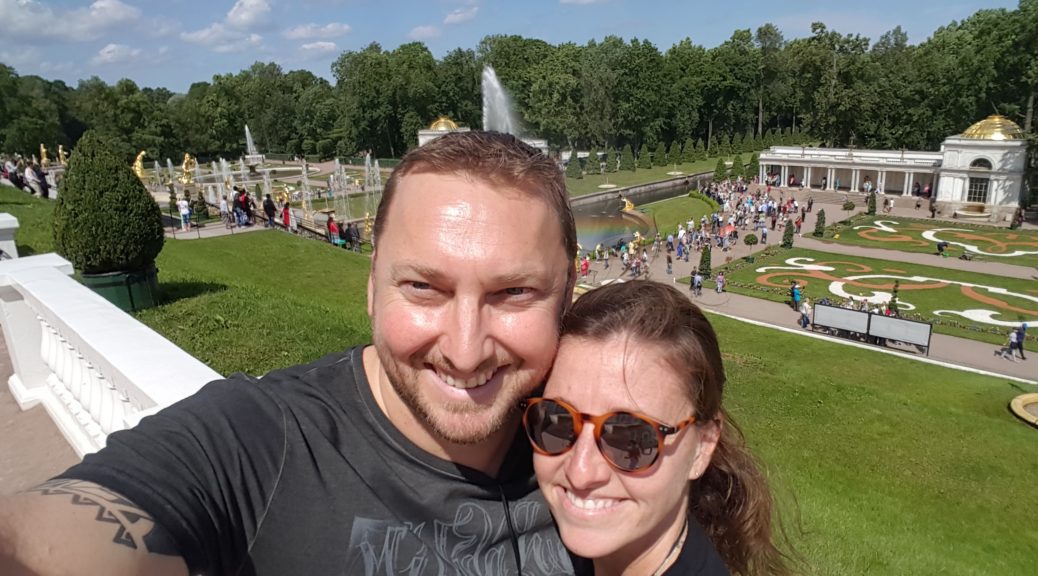SICILY | CATANIA
16 – 18 June 2017
Having done the short hop from a very relaxed first half of the trip in Malta, we had a skrik of a start to Sicily, with our taxi driver having torn through the dark Catania town – including what appeared to be a pedestrian shopping street – and dropping us off in front of a very large, very closed wooden door. We pressed the intercom for “Albatro Rooms“, but got no response.
Checked the booking form, but there was no phone number. Checked for free WiFi (having not yet bought an Italian SIM card) to Google for a number, but there was none. Pressed the button again. Repeatedly.
The door opened. A bewildered woman glared at us, swatted past us to put her garbage down, being careful to block the doorway with her body. We tried to ask her for info on Albatro, but got the blank eyes of someone who really truly doesn’t understand you.
She closed the door. With us on the outside.
Christian had seen a Vodafone sign on our drive in, so we figured if we could get a SIM card then we’d be back in business. Suitcases ‘n all, we trundled down the road.
Obviously the shop was closed (it was 22h30 after all).
A lady walking past noticed our obvious distress and stopped to offer us help. She Googled the hotel and got a number; called it, but there was no response.
She asked where the hotel was and when we pointed, she offered to come there with us to see if she could broker entrance (or information) for us with our future neighbours. It was very kind of her because, by now, we were several blocks away from the hotel.
We made our way back, Christian and I on either side of her to make sure she didn’t attempt to lose us. She managed to get the attention of the night desk and, after thanking her profusely and repeatedly, we were soon being led by Antonio up into the building and to our room (which, although very basic, was massive).
It was nearly midnight and although we could hear from the music and laughter leaking in through the windows that the city of Catania still had lots of life left in her for the night. We did not.
FRIDAY
The Albatro Rooms hotel provided breakfast in the form of a voucher for a coffee shop down the road. It was a simple but deliciously light and fresh pastry (custard for me; jam for Christian) and juice or coffee.
Having no wi-fi in the hotel and too-weak-to-be-useful wi-fi in the coffee shop, first order of business was to get connected. A great decision and €20 later we were 10GB richer… And on our way to the Tourist Office, passing the ruins of Roman Amphitheatre on the way.
We firmed our choices as down the coast to Siracusa (by bus) on the first day and up the coast to Etna (on a private tour) for the second day.
20 minutes later we were on the bus heading South when I got a message from an old friend from home, saying she was currently living in Siracusa and we simply must come and visit. Kismet seeing as we were on the way already!
We agreed to meet on the bridge between Siracusa and the Old Town, Ortygia, at midday. And we did.
Lynne-Marie had moved to Siracusa 2 years prior, so was well-versed to show us around, point out the sights and filling us in on life in Sicily in general, including her very interesting job processing refugees from North Africa who apparently arrive on the Sicilian shores in their droves in summer.
We talked as we walked into Ortygia, the small island historical centre of Siracusa (Syracuse in English), which contains many historical landmarks.
Lynne was our kind of tour guide, starting with a mandatory visit to what she termed The Best gelato shop, so how could we not? The cold, creamy gelato was welcome on such a hot day, which we were told was mid-thirties degrees and could flirt with 40 later on! Plus, we were in Old Town Square with the magnificent Cathedral in front of us, so the gelato surely doubled as a cultural experience??
We wandered around the outline of Ortygia Island, taking in the picture-perfect sea, appreciating even the mildest breath of breeze that came from it and absorbing the buzz that came with the cafe lifestyle on our left and beachlovers on our right.
Almost at the end of our walk we came to Castello Maniance, which usually allows tours but they turned us away because they were closed for a film shoot.
We’d worked up a thirst so ended off refreshments at a sidewalk cafe close to where we’d met earlier, with a great view of the ruins of a Roman Amphitheatre that had once seated thousands of people (in the baking heat) watching gladiators fight wild animals to the death (in the baking heat) which, beyond gruesome, all sounded quite exhausting!
Lynne had other existing plans for the later afternoon so we parted ways, grateful for the couple of hours with our personal tour guide.
We’d skipped lunch (disinterested because it was so hot) but there was an oasis of a fruit juice stand at the bus stop where we got a freshly-squeezed fruit juice slush that was pure heaven!! The kiosk owner was so tickled at my delight that he gave me a frozen melon as well!
An hour in the bus back to Catania wasn’t as labourious as it might usually have been, thanks to the comfy coach and air-conditioning and soon we were entering the city limits again, with the sun still high in the sky so there would be plenty of time to explore our homebase.
With our trusty tourist map in hand, we worked through the list of sights. With most clustered on our road (Via Etnea) and around the tourist office (Via Vittorio Emanuele II), we were comfortable with our surrounds and ticked off the essentials at record pace – church, university, palace, church, fountain, monument, church, piazza, cathedral, monument, Basilica sort of thing.
Very sweaty from our day out, we decided to go home to clean up before dinner so ambled up our road, browsing and shopping as we went (in no hurry since shops only shut at 20h00). At the one shop we bought where we actually bought something, the cashier gave us a brilliant free gift; a beach towel that folded into a zip-up bag. We were so delighted with the ‘present’ that we gave her one back – the melon the juice guy had given us. She was beside herself at our gesture (although must surely have wondered why we were walking around with cold melons on us).
Dinner was as yet undecided so we consulted a few sources and discovered that there was a concentrated pocket of options in a few square blocks in the Old Town. Less than a kilometre’s walk, we decided to take our chances.
We walked up and down a few streets consulting menus, but our final choice was made at first sight when we spotted some activity down an alleyway.
Following a group in, the alleyway opened onto a courtyard where a couple of restaurants had chairs and tables set up, that were near full already.
We got a cosy table at the back and proceeded to be served incredible food. Unsure of portion sizes, fearing that pasta might be a course rather than a main (based on the prices) we had hedged our bets with ordering 2 pasta entrees (€7 each) and 1 main course (€4) and proceeded to be served a mountain of pasta!
Christian’s seafood pasta was teeming with mussels and calamari and topped with an enormous prawn; my carbonara was easily the best I’ve ever had. Our main course extra, which the waiter automatically served as a savoury dessert was pork, thinly sliced and rolled with onions and cheese, crumbed and deep fried. Superb!
Having sat down to dinner after 22h00, we were grateful for the walk home to shift some of the feast so that we could get rested for the big day tour the next day.
SATURDAY
Our tour was starting at 09h00 from the travel agent next to the tourist office so, comfortable that it was only a short walk, we had time to get to the coffee shop up the road for our complimentary breakfast. Christian had the same jam Danish, but I switched to the pain au chocolat… Which was crammed to bursting with creamy chocolate filling! Unbelievably good!
We trotted down the hill and, seeing as we had 20 minutes to spare, took a turn past the morning fish market, which took place in the area behind the palace and adjacent to the bus terminus – 2 points that had seemed so far from each other the day before when the turf was still foreign and two-dimensional on the map.
The Catania fish market is exactly what you’d expect – damp, noisy and smelly. Fishermen peddling reams of silver shiny sardines and anchovies, while butchers were carving up enormous tuna and swordfish. The resultant blocks of tuna on display were so big and richly-coloured that they could easily be mistaken for sides of beef! And the swordfish cuts were unmistakable with the head and the tail book-ended on their display.
We met back at the travel agent and were introduced to our travel mates for the day: a group of 4 French people and an Aussie couple. Our driver arrived and we all hopped in the Mercedes people-carrier; Christian and I sitting up front with the driver, an Italian who spoke fluent French (we understood his explanation to the French contingent that he’d lived in Cannes for 4 years), but little English.
It was a picturesque drive (after the nail-biting exit from the city – Sicilian drivers were every bit as aggressive and crazy as their reputation!) with an audio soundtrack telling us all about the places we were visiting.
We could see Mount Etna almost all of the journey, being such a large and distinctive landmark at 3346 metres high, making it the biggest in Europe and one of the biggest in the world.
Formed over hundreds of thousands of years with construction and destruction, it was humbling to realise that the gulf that became the volcano that we know today was only defined in the last couple of thousand years – so is as much a part of our “modern” history as all of our stories of our human civilisation.
There were 59000 hectares of park around Etna to protect the fauna and flora, all within the province of Catania, so it was a pretty, scenic drive to where we would be visiting the Silvestri craters; 5 craters formed from the 1892 eruption.
Etna emitted more energy than a nuclear bomb, expelling lava rocks bigger than a car for hundreds of metres and flowing lava that covered everything in its path. The Sicilians at least have been making use of the lava to make stone blocks for roads and buildings, which gave the buildings a gritty greyness that could be mistaken for needing a wash. We stopped at a house that had been excavated from the lava; frighteningly well-preserved, exactly as the lava had instantly set it.
There were already scores of cyclists making their way up the mountain. Very brave with the exuberant and very aggressive drivers that even put our South African taxi to shame in the ‘hazardous’ stakes!
Back in the bus, we wound our way upward and were soon at the craters with an hour and a half to explore.
Our timing was a bit off because we were told short on time to catch the cable car up to the next vantage point (2500m) and we’d just missed the sightseeing train that ran between the 5 craters at Silvestri.
Fortunately, we’re not afraid of a walk, so we set off towards the first crater and were soon at the bottom of it looking up at the rim and imagining what it must’ve been like when it erupted (and hoping it had no intention of a repeat performance today!)
The second crater was much of the same, but deeper and blacker so a bit more sinister.
The trek from crater to crater was a bit of a mission with the sides quite steep and the lava gravel quite slippery, so we bypassed the other craters in favour of a walk to the viewing point to take in the panorama.
Peckish from all the walking, we took the opportunity to sample arancini, rice balls stuffed (ours were mince and cheese), crumbed and deep-fried. Delicious!
Being first back at the van, we opened the back and swapped our sneakers for slops. While we were doing so, the Aussies returned and, wordlessly, moved our things from the front into the back where they’d been sitting, taking the front seats for themselves. While not a problem, it seemed like an odd thing to do.
The next stop was a couple of hours beachtime to swim and have some lunch. The driver gave us the option of bigger, busier sandy Naxos or smaller, prettier pebble-beach Isola Bella. The group chose the latter, but the driver still stopped at Naxos for us to take some snaps, where it looked like we’d made a good choice seeing as every inch of the beach was covered in loungers and umbrellas and the sidewalk the same with cafe tables and chairs.
Isola Bella was busy too, clearly catering directly to the needs of the upmarket resorts that nestled in the steep hillsides surrounding the cove, but very pretty with a little island in the middle of the bay that you could access by crossing a section that had slightly less than ankle-deep water.
We had a wander around, lazed in the water and then appreciated the relief from being in the open sun when we took up a table at the most modest of the restaurants, a little courtyard cafe with pleasant music and great panini.
When our time was up we made our way up the stairs, back to the road and our meeting point… To find we’d once again been re-seated. The Aussies had moved our bag back to the front and were back in their old seats! We exchanged a chuckle with the driver, who made up for his lack of English with a shrug and a smile.
It really made little difference as the next stop was a short hop up the hill to Castelmola, a medieval castle and citadel so named because of the molar shaped big rock on which it’s built.
We enjoyed a wander around its old stone alleyways, trying to find the viewing points that offered spectacular views of the panorama on all sides. We marvelled at how the 2000 odd locals nowadays coped with getting up and down the hill, let alone the poor slobs who had to build the place all those hundreds of years ago considering the medieval city only got steps in 1928 to make it accessible!
The last stop was Taormina, a famously beautiful town set on the hillside overlooking the coast, where the who’s who come to enjoy the NINE 5* hotels this small town boasts!
We were given a couple of hours to experience the historical sights (the Greek Theatre ruins and the Roman relics that were engrained in the town itself) and do some (in our case, window-) shopping. We enjoyed a wander around, took the pics that needed taking and settled at the town’s Irish Pub to log a pint on our Guinness Index.
Returning to the van at the 18h00 meeting time, we’d once again been re-homed and my bag was neatly placed where the Aussies wanted us to sit. So we did. And enjoyed the comfort of the bigger seats in the back while they crammed in the front (where the middle seat was slimmed to accommodate the gear lever).
We were back at the travel agent by 18h45 and delighted to see that the city was a hive of activity, clearly come to life after siesta and ready to rock Saturday night.
We made our way up the hill towards our hotel, stopping to buy a few things – made attractive even in Euros thanks to the summer sales, and made more delightful thanks to their unwavering commitment to ‘gift with purchase’.
We got back to our room with an hour or so to rest and refresh before our 21h00 dinner reservation at a place I’d found on an app called The Fork (run/endorsed by TripAdvisor) that was near to the area we’d enjoyed the night before.
The restaurant was great and we flipped our strategy from the previous night and shared a broccoli and pork sausage pasta to start and then a tuna steak and stuffed calamari for mains, washed down with a lovely Sicilian red. When the bill came, we’d gotten a whopping 50% off (€28) for booking through The Fork! Would definitely be looking into more of that for the rest of the trip!
The whole town was alive on our walk back to our hotel and even though approaching midnight, there were still families with children socialising and relaxing in and around the square. It seemed a shame to call it a night, but we were *finished* from our long day’s sightseeing.
SUNDAY
Having decided on the 09h00 bus to Palermo, we had time in the morning for a run.
Our position on Via Etnea was perfect for it and we started with running up the hill to the end, then the entire downhill to the fountain/palace/fish market piazza (which was deserted so would have made for perfect photos if we weren’t so sweaty and unsightly) and then back up the hill to our rooms. Almost 5km and 30 minutes on the nose.
Showered and packed, we enjoyed our last pastry at Misterlino (the most magnificent custard croissant!) before rolling our cases all the way back down the hill (cursing the Romans and their relentless cobblestones) to the bus terminus to go to Palermo.
